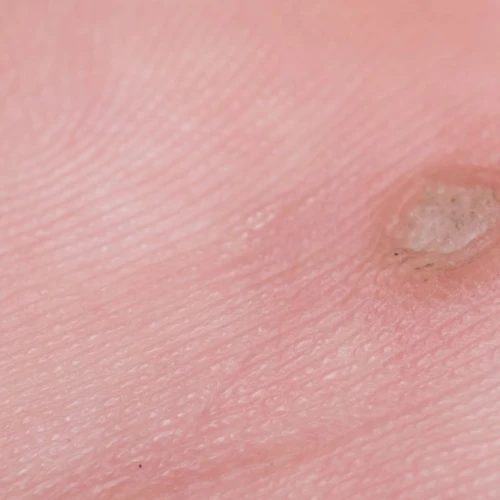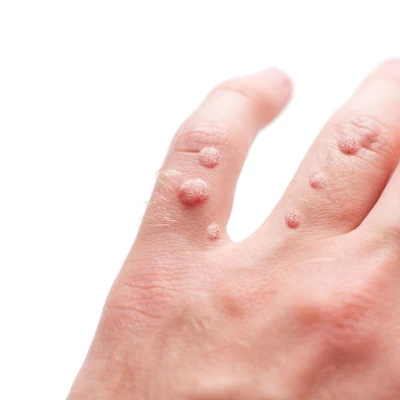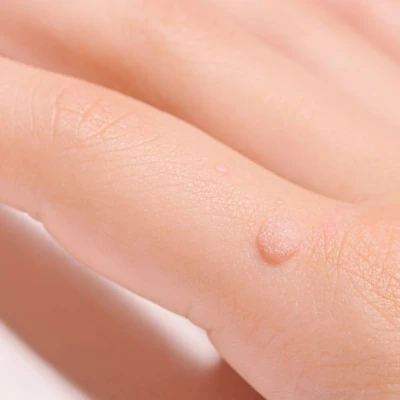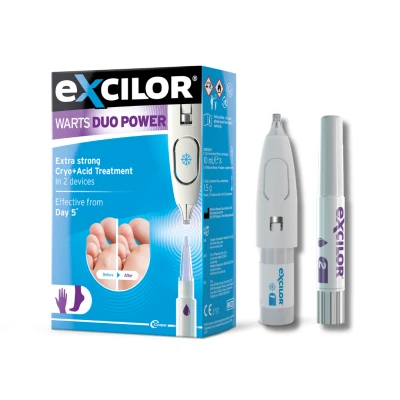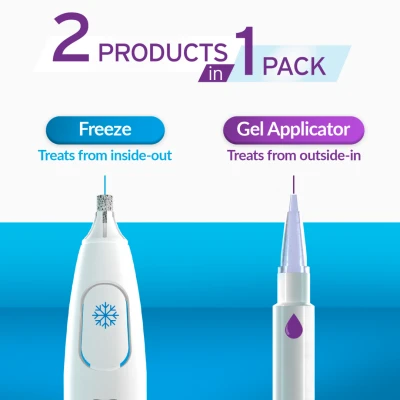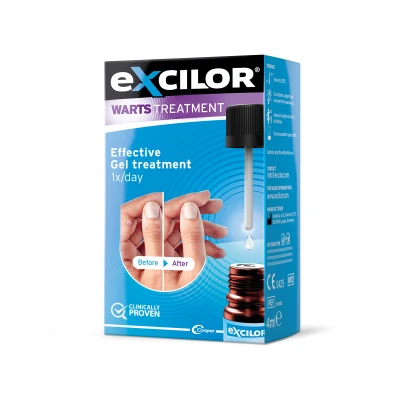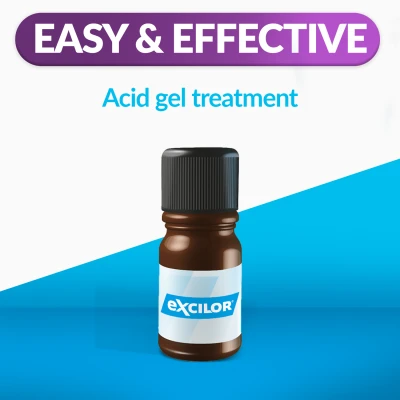What is a wart?1, 2
A wart is a small swelling on the surface of the skin. It can be described as an abnormal skin growth. It is a benign skin condition that is not very contagious caused by an infection of the skin by one of the human papillomaviruses (HPV). Warts are common. In France, for example, it is estimated that one person in four will develop warts. Children between the ages of 5 and 15 years are most affected by this type of skin condition: 50-70% of children will have a common wart at some point in time (on the hands and face) and 20-30% will have plantar warts (on the feet).
The different type of skin warts are distinguished based on their appearance, location on the body and type of virus responsible.
What are the different types of warts? 1, 2
Common warts
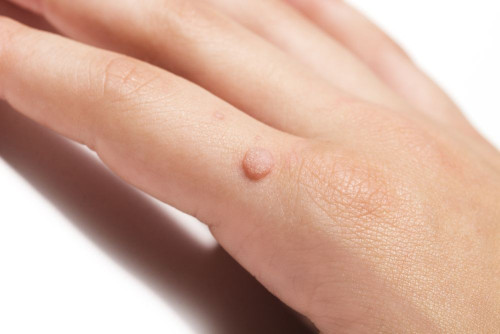
Common warts consist of single or multiple warts that are either round or filiform raised lesions, ranging in size from a few millimetres to 1 cm.
Round common warts are mainly located on the back of the hands and fingers. They can also develop around the nails, leading to nail abnormalities (deformed or detached nails). Common warts around the nails can be very painful.
Common warts can also be elongated and described as filiform. Filiform common warts are usually located on the face, especially around the mouth and shaving areas (neck). They affect men more than women.
Flat warts (plane warts)
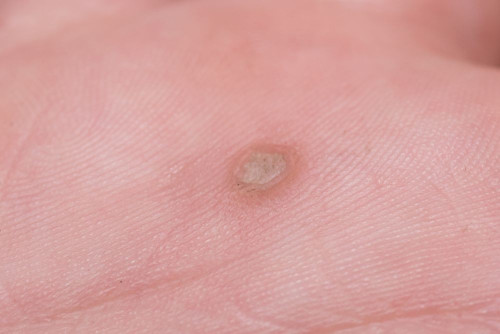
Flat warts are less prominen than common warts. They occur as small, raised sections of the skin (1 to 5 mm) with a flattened top. This wart is either the same colour as the skin or slightly darker. They tend to group together in patches on the face, back of the hands and limbs.
Plantar warts
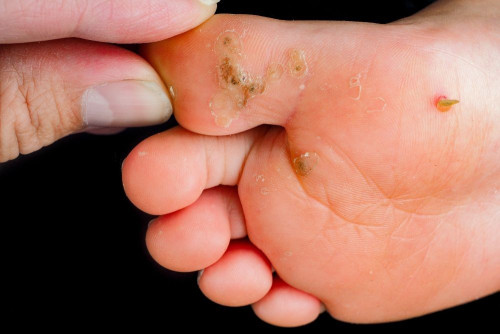
Plantar warts form on the soles of the feet, often in weight-bearing areas.
There are two types of plantar warts:
- Myrmecial-type plantar warts or a single plantar wart. These are well-defined warts with blackish pinpoints at their centre, which are actually blood vessels. Myrmecia warts are deep-seated, clearly delimited by a horny ring, and can be painful when pressed.
- Mosaic warts, which appear as patches of thickened skin resembling a mosaic. This type of wart can be found on the soles of the feet, hands and around the nails. Mosaic warts are much less painful than a single wart.
What causes warts?1
Warts form after the skin is infected by one of the types of human papillomaviruses. Types 1, 2 and 3 most often cause skin warts. These viruses, which are present on the surface of the skin, are able to penetrate the skin through breaches in the protective layer of the skin such as a wound, dry skin, etc.
Are warts contagious?1
Warts are not very contagious, but they can spread from person to person.
We talk about direct spreading when one infected person passes the virus on to another through skin-to-skin contact. The other direct method of spreading is self-spreading, i.e. viruses in the cells of the wart will spread over the skin when a person scratches themselves. The viruses then spread, which can result in warts through self-spreading.
Indirect spreading occurs when a person catches the virus through contact with a contaminated surface (ground, tools, etc.) and when it penetrates into damaged skin (minor cut, abrasion, etc.).
People most at risk of developing warts on their hands are professionals exposed to multiple micro trauma to the skin (butchers, fishmongers, vets, etc.).
Plantar warts are caused by excessive sweating of the feet. This type of wart can be transmitted in sports halls, communal showers or swimming pools. However, they are spread more easily after bathing in hot water, which softens the stratum corneum on the feet.
Finally, communal life (i.e. schools) are also a major risk factor for viral transmission.
How do you treat and get rid of a wart?2, 3, 4
Skin warts can heal spontaneously in a few months, but some may persist for several years. In the vast majority of cases, warts will disappear spontaneously within two years. However, they can also be removed quickly using over-the-counter products available from the chemist. You can use wart-removal products that are applied directly on to the wart, unless it is located on the face, genitals or an area of damaged skin. These products contain salicylic acid and other corrosive substances that destroy warts. To remove a wart, you can also use an occlusive dressing. This type of dressing is air and water-tight, which prevents the skin from breathing and, therefore, removes the wart. The dressing should be used for several weeks, until the wart has disappeared. When used with wart-removal products, the occlusive dressing increases the penetration of these products into the skin. Occlusive dressings cannot be used on the face or close to nails.
If the self-medication products do not work, patients should consult their general practitioner or a dermatologist. There are more powerful wart-removal treatments (liquid nitrogen cryotherapy, electrocoagulation, carbon dioxide laser, chemical methods, etc.).
However, it’s important to remember that no treatment is currently available to eradicate the viruses responsible for warts, which explains the frequent recurrences.

